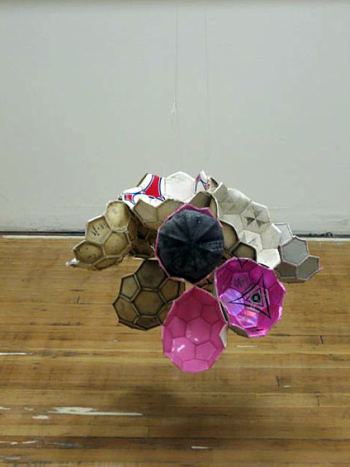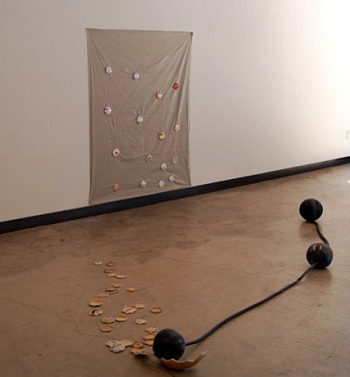Several decades ago, critical opinion had begun to swing against Kurt Schwitters. In a robust age, his desire to shore up discards into a version of his life looked at best minor and at worst nostalgic.
Schwitters, Merz Picture 32A (Cherry Picture). 1921
 Today he’s philosopher king. Early 21st century art has a strong interest not only in recycling ideas and materials, but in trying and failing to recycle them, leaving them in tatters.
Today he’s philosopher king. Early 21st century art has a strong interest not only in recycling ideas and materials, but in trying and failing to recycle them, leaving them in tatters.
There is a singer everyone has heard,
Loud, a mid-summer and a mid-wood bird,
Who makes the solid tree trunks sound again.
He says that leaves are old and that for flowers
Mid-summer is to spring as one to ten.
He says the early petal-fall is past
When pear and cherry bloom went down in showers
On sunny days a moment overcast;
And comes that other fall we name the fall.
He says the highway dust is over all.
The bird would cease and be as other birds
But that he knows in singing not to sing.
The question that he frames in all but words
Is what to make of a diminished thing.– Robert Frost, The Oven Bird
That bit of ordinary magic is common. It’s the story that she tells without any suggestion of a narrative, not of the glut of consumer society’s casual discards but wreckage after a fall.
Stagger out into the light after losing everything and there are her sculptures on the floor, the flayed skin of soccer balls hung up on a wire or deflated inner tubes curled as if smoked in a fire.

She stops the cynical and seen-it-all dead in their tracks. Next to her, Anselm Kiefer seems a bit bombastic (and I love Anselm Kiefer). While his work rages, hers is absolutely quiet.
In 1957, a young Paul Taylor aspired to her kind of silence. To that end, he and his partner stood motionless on a stage for 4 minutes, in a piece called “Duet.” (The New York Times famously reviewed it with four inches of blank space.) The piece was thought ridiculous, even in time by Taylor.
What no one has done in dance, Hinrichs does with objects that become a kind of dance. They are motionless but move on.

This Saturday at noon, Hinrichs talks about her work at Howard House.



Leave a Reply